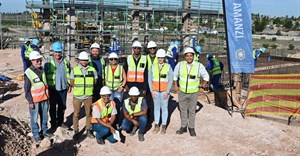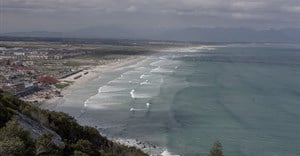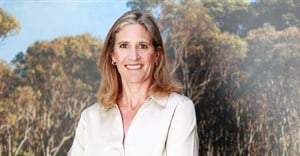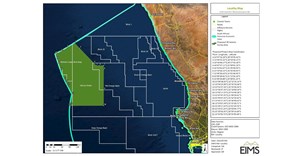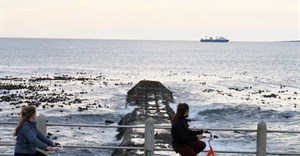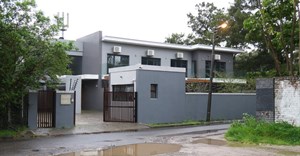Cape Town’s ocean-bound sewage options unveiled

- The City of Cape Town has released various plans to deal with the 32-million litres of raw sewage it currently releases into the Atlantic every day.
- A feasibility study to treat the sewage to environmentally acceptable standards before pumping it out to sea has been presented to the City.
- A new wastewater treatment works to clean the sewage or pipe it futher out to sea or to existing treatment works will cost between R2bn and R8bn.
- In the short term the existing marine outfalls require upgrades costing R100m.
At least 32-million litres of untreated sewage is pumped into Cape Town’s marine protected areas every day through marine outfalls at Greenpoint, Sea Point, and Hout Bay.
According to a new feasibility study, it will cost up to R8bn to either build wastewater treatment works to treat it first, or pump it to existing wastewater plants.
Cape Town has been pumping sewage from the Atlantic seaboard into the sea for decades, but the practice has come under increasing scrutiny and public opposition since photos of the sewage floating along the ocean surface were published in 2016.
There has been renewed public scrutiny of the marine outfalls over the past year after Minister of Forestry, Fisheries and the Environment (DFFE) Barbara Creecy ordered the City to undertake a public participation process relating to the required discharge permits for the outfalls.
The public participation process ended on 21 November, with 1,979 comments submitted, according to a presentation by consulting firm Zutari, which managed the process for the City.
Zutari was also commissioned early last year to determine the feasibility of treating the sewage released at Greenpoint (which includes all sewage from the city centre extending to Salt River), Camps Bay, and Hout Bay, before releasing it through the outfalls.
The study was presented at a workshop on 31 January attended by the City’s Water and Sanitation Directorate, the Water and Sanitation Portfolio Committee, and the Mayoral Advisory Committee for Inland Water Quality.
The presentation, provided to GroundUp on Friday, states that in the short-term, upgrades to the marine outfall pump stations and present infrastructure will cost R100m.
Zutari noted the Hout Bay outfall failed to comply with its Coastal Water Discharge Permit issued by the DFFE in respect of total Kjeldahl nitrogen – a measurement of organic nitrogen and ammonia nitrogen contained in sewage. It met the requirements just 41% of the time.
We also reported that the Hout Bay outfall failed to comply with maximum discharge volumes, among other permit conditions.
When it came to the release of heavy metals into the marine environment, the Green Point outfall met the requirement for zinc levels just 34% of the time, with the Camps Bay outfall compliance being 46% overall. However, overall compliance since 2020 has improved.
As designated marine outfalls, all three are exempt from measurements of faecal bacteria (such as E. coli and enterococci) and chemical components.
Solutions
The study provides medium and long-term solutions for treating the sewage released through the marine outfalls.
Within the medium-term, the study offers options to simply extend the existing marine outfall pipelines which are currently between 1.35km and 2.1km long, although in the case of Camps Bay and Hout Bay, the actual discharge is only about 700 metres from land due to the shape of the bays.
Offering no treatment options but extending the pipelines by 10km for Camps Bay, 15.3km for Greenpoint, and 11.6km for Hout Bay, would cost between R2.2bn and R2.6bn, depending on whether the pipelines were anchored to the sea bed, or buried beneath it.
Building a new wastewater treatment works at Green Point, Camps Bay, and Hout Bay, at which the sewage would be treated, would cost between R2.2bn and R3.4bn, depending on the extent of the treatment.
The long-term scenario presents options for pumping the sewage from all three areas to various existing wastewater treatment works, either via new ocean or land-based sewage pipelines. The wastewater treatment works under consideration are Potsdam (at Milnerton), Cape Flats (at Strandfontein), Athlone, and Wildevoelvlei (at Kommetjie). Additional facilities at these wastewater treatment works would need to be built to deal with the increase in sewage flow.
These options vary in price from R2.2bn to R7.3bn, with the land-based piping options being generally less expensive than ocean pipelines.
In a media statement released on Thursday, Mayco Member for Water and Sanitation Zahid Badroodien said a more in-depth report is being finalised, taking into account comments received during the outfall permit public participation process.
“Preliminary insights revealed that treatment quality was rated as the biggest concern … the main reason for objecting to the marine outfall discharge permits – a sentiment expressed equally across all three outfalls,” stated Badroodien.
He said the City was busy finalising the public participation report for Creecy, which was due on 29 February.
“In the interim, consideration will be given to implementing short-term solutions, focused on the replacement and refurbishment of existing treatment and outfall infrastructure. In addition, maintenance gaps can be addressed to extend the life span of infrastructure.”
He said it was agreed an Environmental Impact Assessment would need to be done as part of considering proposed options, along with assessing the implications for the City’s budget.
The viability of the options needed to be evaluated and, “if found feasible”, funding would come from the long term infrastructure programme.
This article was originally published on GroundUp.
© 2024 GroundUp. This article is licensed under a Creative Commons Attribution-NoDerivatives 4.0 International License.
Source: GroundUp

GroundUp is a community news organisation that focuses on social justice stories in vulnerable communities. We want our stories to make a difference.
Go to: http://www.groundup.org.za/










